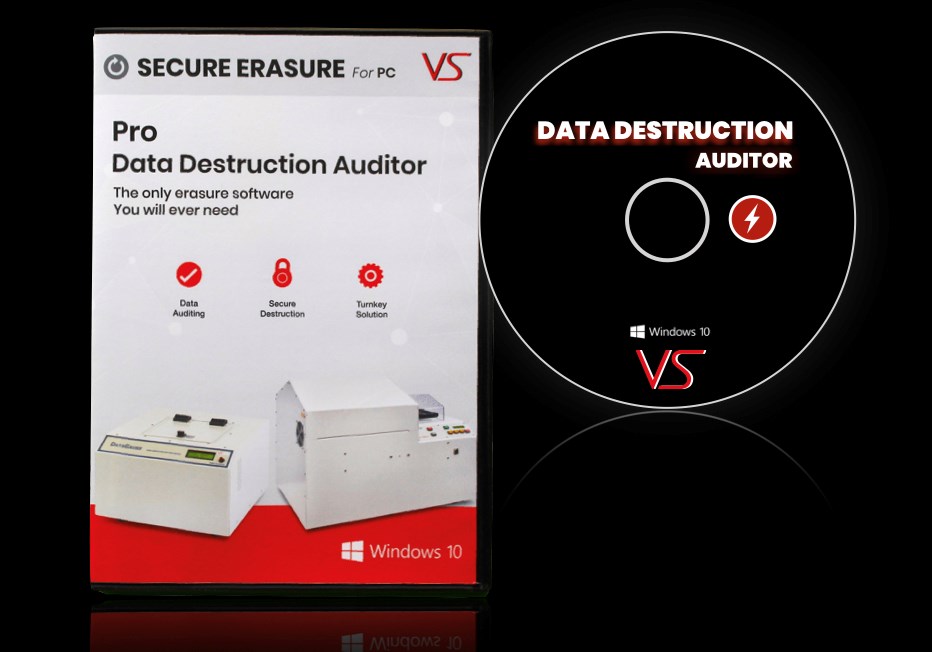The Impact of Effective Data Destruction on Cyber Security Threat Monitoring
The Impact of Effective Data Destruction on Cyber Security Threat Monitoring
Blog Article
The Significance of Effective Information Damage Practices in Shielding Sensitive Information and Ensuring Computer System Safety
In an age where data breaches are progressively common, the importance of efficient information damage methods can not be overemphasized. Organizations face substantial threats when delicate information is inadequately taken care of, possibly bring about unauthorized access and severe monetary repercussions. Implementing durable data damage methods not just alleviates these risks yet additionally straightens with legal compliance needs, ensuring that organizations support their track record and foster client trust. Nevertheless, the inquiry stays: what details techniques can be used to boost these methods, and how can companies effectively incorporate them into their total cybersecurity structure?
Comprehending Information Devastation
Understanding data damage is critical in today's digital landscape, where delicate info can quickly be endangered. Effective information devastation involves not merely guaranteeing yet removing data that data is irretrievable through comprehensive techniques. This process is vital for companies that take care of personal customer info, intellectual property, or inner files, as any breach can cause serious financial and reputational effects.
Data destruction encompasses different methods, including shredding physical media, degaussing magnetic storage gadgets, and utilizing software-based remedies that overwrite information numerous times. Each technique offers a specific objective and should straighten with the sensitivity of the information being taken care of. As an example, physical devastation is often favored for hard disk drives including highly private information, while software application methods may be adequate for much less delicate info.
Additionally, adhering to sector criteria and policies, such as the General Data Protection Regulation (GDPR) or the Medical Insurance Transportability and Responsibility Act (HIPAA), is important for compliance and to alleviate legal threats. Organizations must establish a robust data destruction plan, train workers on ideal methods, and consistently investigate their procedures to guarantee that all delicate info is thrown away firmly and properly.
Dangers of Inadequate Practices
Inadequate data damage methods expose companies to substantial risks that can have far-reaching consequences. When delicate details is not properly dealt with, it stays susceptible to unauthorized access, which can bring about information breaches and identification theft. Such occurrences not just endanger the safety and security of people yet likewise tarnish the organization's online reputation, leading to a loss of consumer count on and potential economic repercussions.
Furthermore, regulatory compliance is increasingly rigid in many sectors. Failure to stick to data devastation laws can result in hefty fines and lawful actions versus companies. These charges can strain economic resources and draw away focus from core organization operations.
In enhancement, the abuse of recurring data can cause intellectual building burglary or corporate espionage, jeopardizing competitive advantages (data destruction). The influence of insufficient information destruction expands beyond prompt economic losses; it can likewise result in long-term damages to brand honesty and market setting

Organizations must identify that information protection is not exclusively regarding protecting against violations; it likewise incorporates the responsible monitoring of data throughout its lifecycle. Overlooking efficient data damage methods can have disastrous effects, underscoring the requirement for durable actions to alleviate these threats.
Best Practices for Data Damage
Executing effective information devastation techniques is vital for securing delicate details and keeping conformity with regulatory criteria. Organizations should adopt a multi-faceted approach to ensure that data is irretrievable, thereby preventing unapproved access and possible breaches.
First, data should be categorized based on level of sensitivity, permitting organizations to use appropriate damage approaches customized to the degree of risk. For digital data, using software-based data-wiping tools that abide by sector criteria can efficiently overwrite existing data. Physical devastation techniques, such as shredding or degaussing, are essential for tools that save sensitive information, guaranteeing total obliteration.
Establishing a clear data retention plan is vital, detailing how much time various sorts of details must be preserved before devastation. Normal audits of information storage space systems are additionally necessary to recognize unnecessary or outdated data needing removal.
Moreover, training employees on the relevance of data devastation and the specific procedures to adhere to fosters a culture of security within the organization. Maintaining documentation of data devastation processes offers liability and sustains conformity with inner policies and exterior regulations. By adhering to these best techniques, organizations can significantly mitigate the threats connected with information exposure.
Legal and Conformity Factors To Consider

Failure to abide by these policies can result in serious important site fines, including significant fines and reputational damage. Organizations should execute a durable data devastation plan that lines up with these legal structures and offers clear standards on the appropriate methods of information disposal, whether physical shredding or digital wiping.
Additionally, keeping documentation of information devastation tasks is necessary for demonstrating compliance throughout audits or evaluations. By focusing on lawful and conformity factors to consider, organizations can boost their data protection position and foster trust with stakeholders and customers, eventually adding to a more secure data management environment.
Advantages of Effective Information Destruction
Reliable information devastation practices prolong past mere compliance; they use considerable advantages to companies that prioritize them. By ensuring that delicate info is irretrievably destroyed, organizations minimize the threat of data breaches and the possible economic repercussions associated with them. This positive method not only safeguards versus unauthorized access yet likewise enhances the general credibility of the company in the eyes of customers and stakeholders.
Applying durable information damage techniques, such as physical damage of storage devices or advanced data wiping techniques, adds to the strengthening of an organization's cybersecurity pose. data destruction. It reduces the likelihood of copyright burglary and safeguards proprietary information, thus keeping an one-upmanship on the market

Verdict
In conclusion, reliable information damage techniques are vital for guarding sensitive info and boosting general computer system safety. By implementing comprehensive methods such as software, shredding, and degaussing overwriting, organizations can mitigate the dangers related to unapproved gain access to and data breaches. Adherence to regulative criteria, consisting of GDPR and HIPAA, further reinforces compliance and safeguards against lawful consequences. Eventually, a dedication to durable data damage methods promotes a culture of duty, consequently strengthening an organization's cybersecurity stance and maintaining customer trust.

Report this page